2-t-Butylamino-1-(4-hydroxy-3-hydroxy-3-hydroxymethyl)phenylethanol
C13H21NO3
Anabolic activity index: not a steroid
Androgenic activity index: not a steroid
SALBUTAMOL 10mg – DRAGON PHARMA
Introduction to Salbutamol (Albuterol) 10mg
Salbutamol, also known by its international nonproprietary name (INN) as Albuterol, is a widely recognized and extensively used medication in the treatment of respiratory conditions such as asthma, chronic obstructive pulmonary disease (COPD), and other bronchospastic disorders. The active ingredient, Salbutamol, is classified as a short-acting beta-2 adrenergic receptor agonist. It functions by relaxing the smooth muscles of the airways, thereby facilitating easier breathing for patients experiencing bronchospasm.
The 10mg formulation by Dragon Pharma, presented in the form of 100 tablets per package, is designed for oral administration. This product is particularly valuable for individuals who require consistent management of their symptoms, offering a convenient and effective solution for maintaining respiratory health.
Mechanism of Action
Salbutamol (Albuterol) works primarily by stimulating beta-2 adrenergic receptors located in the bronchial smooth muscle. Upon binding to these receptors, Salbutamol activates the enzyme adenylate cyclase, which in turn catalyzes the conversion of ATP to cyclic AMP (cAMP). The increase in cAMP levels leads to the activation of protein kinase A (PKA), which phosphorylates target proteins that contribute to the relaxation of bronchial smooth muscle.
This relaxation of the bronchial muscles results in bronchodilation, which widens the airways, reduces airway resistance, and increases airflow to the lungs. The rapid onset of action makes Salbutamol highly effective in providing quick relief from acute asthma attacks and other conditions characterized by bronchospasm. Additionally, Salbutamol has minimal action on the beta-1 adrenergic receptors in the heart, making it a safer option with fewer cardiovascular side effects.
Indications
Salbutamol (Albuterol) 10mg tablets are indicated for the following conditions:
- Asthma: As a rescue medication, Salbutamol is used to alleviate acute symptoms of asthma, such as wheezing, coughing, and shortness of breath. It is also prescribed for the prevention of exercise-induced bronchospasm (EIB).
- Chronic Obstructive Pulmonary Disease (COPD): Patients with COPD, which includes chronic bronchitis and emphysema, benefit from Salbutamol’s bronchodilatory effects. It helps to improve airflow, reduce dyspnea, and enhance the quality of life.
- Bronchospasm: Salbutamol is effective in treating bronchospasm associated with other respiratory conditions, such as allergic bronchitis, chronic obstructive airway disease, and respiratory infections.
- Prophylaxis in Known Asthma Triggers: Salbutamol can be used prophylactically before exposure to known asthma triggers such as allergens, cold air, or exercise.
Dosage and Administration
Adult Dosage:
- Acute Bronchospasm: The recommended dose for acute bronchospasm is 10mg (one tablet), taken orally. This dose can be repeated every 4 to 6 hours, as needed.
- Maintenance Therapy: For ongoing maintenance, the typical dosage is 10mg taken 3 to 4 times daily, depending on the severity of the condition and the patient’s response to treatment.
Pediatric Dosage:
- Children 6-12 Years: The recommended dose for children aged 6 to 12 is 5mg (half a tablet), taken 3 to 4 times daily.
- Children Over 12 Years: Adolescents over 12 years may take the adult dosage of 10mg, 3 to 4 times daily.
Administration Instructions:
- Salbutamol tablets should be taken with water and can be consumed with or without food.
- It is important to follow the prescribed dosage and frequency to avoid overuse, which can lead to potential side effects or reduced efficacy.
- In case of a missed dose, it should be taken as soon as possible, unless it is almost time for the next dose. In such cases, skip the missed dose and continue with the regular dosing schedule.
Pharmacokinetics
Absorption:
Salbutamol is rapidly absorbed from the gastrointestinal tract when taken orally. Peak plasma concentrations are typically reached within 2 to 3 hours after ingestion. The bioavailability of Salbutamol when taken orally is approximately 50%, due to first-pass metabolism in the liver.
Distribution:
Salbutamol is widely distributed throughout the body, with a volume of distribution of approximately 2.2 L/kg. It crosses the blood-brain barrier and the placenta, and small amounts are found in breast milk.
Metabolism:
Salbutamol undergoes hepatic metabolism, primarily through conjugation to form inactive sulfate conjugates. The metabolism of Salbutamol is mediated by the liver enzyme sulfotransferase, which converts it into salbutamol-4’-O-sulfate.
Excretion:
The elimination half-life of Salbutamol is approximately 4 to 6 hours. It is excreted primarily via the kidneys, with around 50% of the dose being excreted unchanged in the urine. The remainder is excreted as inactive metabolites.
Contraindications and Precautions
Contraindications:
- Hypersensitivity: Salbutamol is contraindicated in individuals with a known hypersensitivity to Salbutamol or any of the excipients in the formulation.
- Tachyarrhythmias: Patients with pre-existing tachyarrhythmias should not use Salbutamol, as it may exacerbate their condition.
Precautions:
- Cardiovascular Conditions: Caution should be exercised when prescribing Salbutamol to patients with cardiovascular disorders, such as hypertension, ischemic heart disease, or arrhythmias. Although Salbutamol primarily targets beta-2 receptors, it can still have some beta-1 adrenergic activity, potentially leading to increased heart rate or palpitations.
- Diabetes: Salbutamol may cause hyperglycemia in diabetic patients. Blood glucose levels should be monitored regularly, and dosage adjustments of insulin or oral hypoglycemic agents may be necessary.
- Thyrotoxicosis: Patients with hyperthyroidism should use Salbutamol with caution, as beta-adrenergic stimulation can exacerbate symptoms of thyrotoxicosis.
- Pregnancy and Lactation: Salbutamol should only be used during pregnancy if the potential benefits outweigh the risks to the fetus. It is excreted in breast milk, so caution is advised when administering it to nursing mothers.
- Paradoxical Bronchospasm: In rare cases, Salbutamol can cause paradoxical bronchospasm, a condition in which the airways constrict instead of dilating. If this occurs, the drug should be discontinued immediately, and alternative therapy should be considered.
Side Effects
Salbutamol is generally well-tolerated when used as directed. However, some patients may experience side effects, including:
- Common Side Effects:
- Tremors: Fine tremors, particularly in the hands, are a common side effect of Salbutamol.
- Headache: Some patients may experience mild to moderate headaches.
- Palpitations: Increased heart rate and palpitations can occur, especially at higher doses.
- Nervousness: Patients may experience nervousness or anxiety.
- Muscle Cramps: Muscle cramps, particularly in the legs, may occur.
- Dry Mouth: A dry mouth is a less common but possible side effect.
- Serious Side Effects:
- Hypokalemia: Prolonged use of Salbutamol can lead to decreased potassium levels in the blood, which can be serious and require monitoring.
- Chest Pain: If chest pain occurs, especially if accompanied by shortness of breath or other signs of a heart attack, immediate medical attention is required.
- Paradoxical Bronchospasm: As previously mentioned, this is a rare but potentially life-threatening condition where the medication causes the opposite of its intended effect.
- Allergic Reactions:
- Rash, Itching, and Swelling: These are signs of an allergic reaction and warrant discontinuation of the medication and immediate medical attention.
- Anaphylaxis: Though extremely rare, anaphylaxis is a severe allergic reaction that requires emergency treatment.
Drug Interactions
Salbutamol can interact with various other medications, and these interactions can affect its efficacy or increase the risk of side effects. Notable interactions include:
- Beta-blockers (e.g., propranolol): Beta-blockers can reduce the bronchodilatory effects of Salbutamol, potentially worsening respiratory conditions. They should generally be avoided in patients using Salbutamol unless absolutely necessary.
- Diuretics (e.g., furosemide): The use of non-potassium-sparing diuretics can increase the risk of hypokalemia when taken with Salbutamol.
- MAO Inhibitors: Patients on monoamine oxidase inhibitors (MAOIs) or those who have recently discontinued them should use Salbutamol with caution due to the risk of potentiated cardiovascular effects.
- Digoxin: Salbutamol may reduce serum digoxin levels, potentially reducing its efficacy in patients with heart conditions.
- Tricyclic Antidepressants: These can potentiate the effects of Salbutamol on the cardiovascular system, leading to an increased risk of side effects like tachycardia and hypertension.
Special Populations
Geriatric Population:
Older adults may be more sensitive to the side effects of Salbutamol, particularly the cardiovascular effects. Dosage adjustments may be necessary, and close monitoring is recommended.
Pediatric Population:
In children, Salbutamol should be used under strict medical supervision. The dosage may need to be adjusted based on the child’s age, weight, and severity of the condition.
Pregnancy and Lactation:
As mentioned earlier, Salbutamol should be used during pregnancy only if the benefits outweigh the potential risks. Nursing mothers should be cautious, as the drug is excreted in breast milk and could affect the infant.
Overdose
In the event of an overdose, the following symptoms may occur:
- Tachycardia: Excessive stimulation of beta-adrenergic receptors can lead to a dangerously high heart rate.
- Tremor: Overdose can exacerbate the tremor associated with Salbutamol use.
- Hyperglycemia: Blood sugar levels may rise significantly.
- Hypokalemia: Severe potassium depletion can occur, leading to muscle weakness, cramps, and arrhythmias.
Treatment of Overdose:
Immediate medical attention is required in case of an overdose. Treatment typically involves supportive measures and symptomatic care. Beta-blockers may be used to counteract the effects of Salbutamol, but they must be administered with caution due to the risk of inducing bronchospasm.
Storage and Handling
Salbutamol (Albuterol) 10mg tablets should be stored at room temperature, between 20°C to 25°C (68°F to 77°F), away from moisture, heat, and direct sunlight. The tablets should be kept in their original packaging until use to protect them from light and moisture.
The medication should be kept out of reach of children and pets to prevent accidental ingestion. Any unused or expired medication should be disposed of properly, in accordance with local regulations, to avoid environmental contamination or accidental exposure.
Conclusion
Salbutamol (Albuterol) 10mg tablets by Dragon Pharma provide an effective and reliable treatment option for managing respiratory conditions such as asthma, COPD, and bronchospasm. With a well-established safety profile and proven efficacy, Salbutamol remains a cornerstone in the management of bronchospastic disorders. However, like all medications, it should be used responsibly, under the guidance of a healthcare provider, to ensure optimal outcomes and minimize the risk of side effects. Whether used for acute relief or as part of a maintenance regimen, Salbutamol offers patients the ability to breathe easier and lead a more active, fulfilling life.

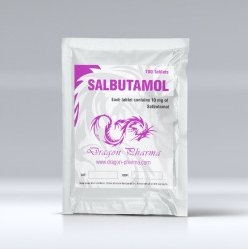
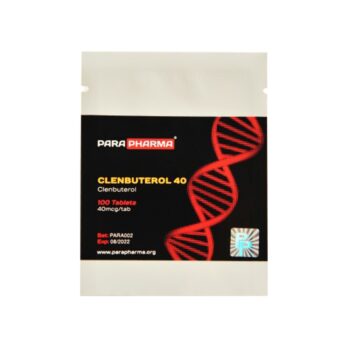
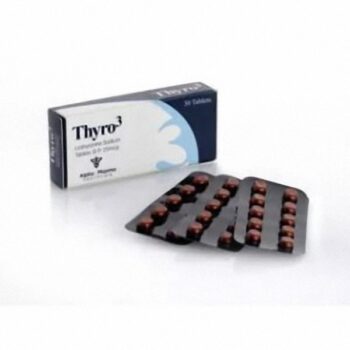
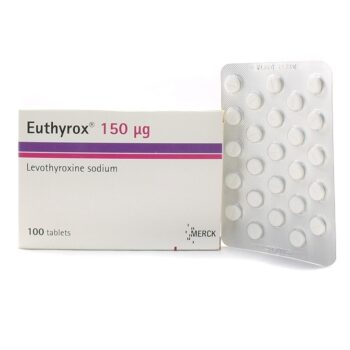
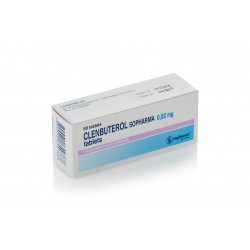
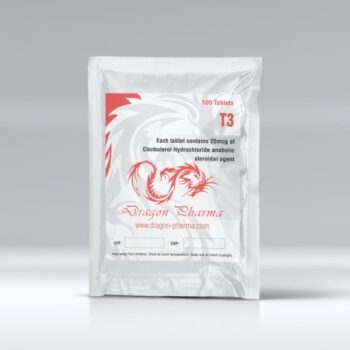

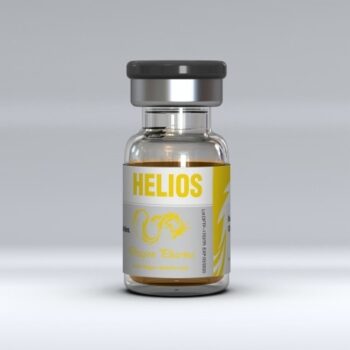


Reviews
There are no reviews yet.